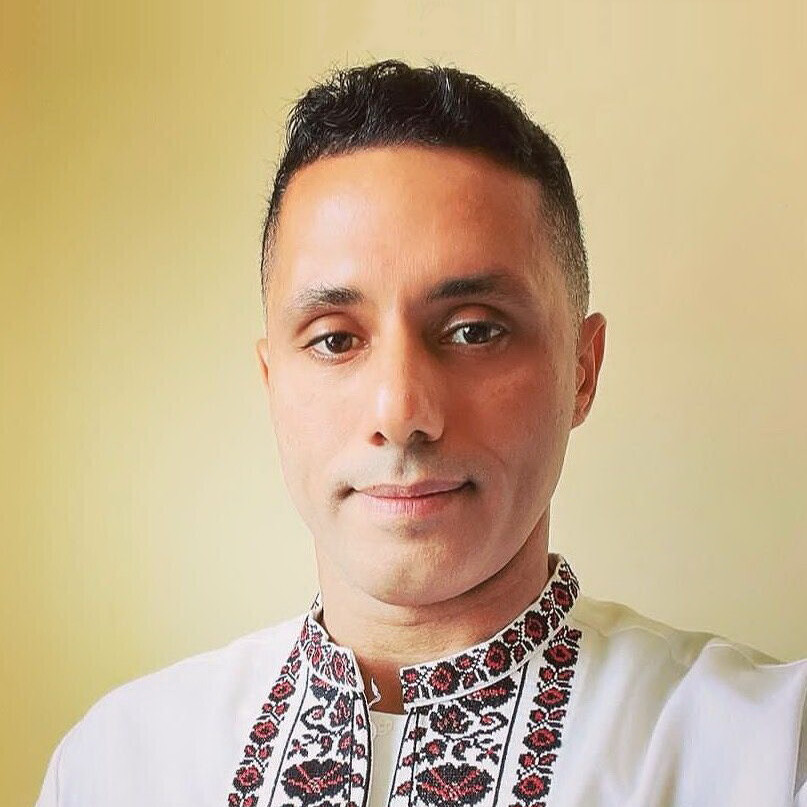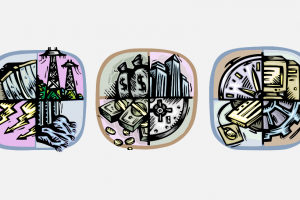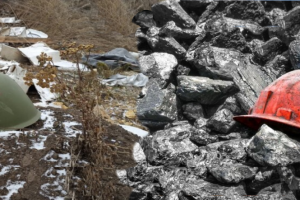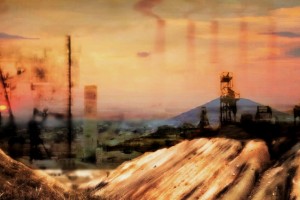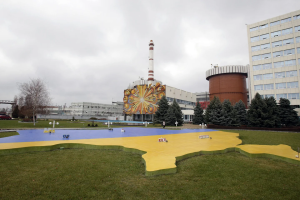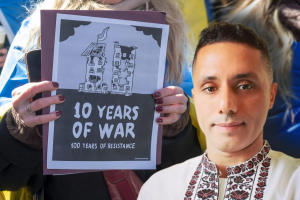Defence diplomacy: Ukraine and the Global South
Source: New Eastern Europe
The “Global South” is a fluid term, selectively used to describe developing states in contrast with the developed “Global North” or the “West”. The term is controversial and can be misleading. It is not strictly geographical or economic, but often aligned with a mixture of selective historical contexts, self-identification/re-identification, development indicators and political characteristics. These characteristics may include relative instability, corruption and other governance challenges, as well as social inequalities.
The regime types vary, as well. They can range from democratic/free (like Argentina, Brazil, Ghana, Namibia and South Africa), to hybrid/semi-free (like Pakistan, India, Morocco, Kuwait and Indonesia) and authoritarian/not free (the majority – from Nicaragua, Venezuela and Cuba in the west to Vietnam, Laos and Cambodia in the east, passing through Angola and Ethiopia on both banks of the African continent).
Three observations
Before delving into the hard and soft power of the Global South and its countries’ importance for Ukraine, three brief observations should be made. First, the Global South is not an entity – political, economic, military or otherwise. Despite the fair criticism levelled at the term the “West”, it does describe a set of similar political systems (mainly liberal democratic governance) with free market, developed economies (with varying checks). It also includes interstate bodies to coordinate foreign policy, security and defence affairs such as the European Union and the NATO alliance. This is not the case with the G-77, BRICS or the Russian-led Collective Security Treaty Organization (CSTO).
Second, governance models for Ukraine and its long-term alliances should remain “western”. Considering the G-77 as a representative entity of the Global South, there are clear problems with corruption, repression, authoritarianism and bad governance. Both interstate and intrastate armed conflicts have plagued tens of G-77 countries. This is the situation found in these nations many decades after de-colonization – and in some cases – a century afterwards. Examples include three devastating wars between Pakistan and India (1947, 1965 and 1971), an eight-year war between Iraq and Iran (1980-88), multiple invasions of Chad by Libya (1978-1987), an 11-year Cambodian-Vietnamese war (1978-1989), and an Ethiopian-Eritrean war (1998-2000) among tens of other brutal wars in Africa and elsewhere in the G-77. Overall, both interstate and intrastate conflict resolution structures and mechanisms are less effective and remain underdeveloped. Hence, the Global South does not offer a model of relative freedoms, rule of law, prosperity and peace (yet). The West does. Despite major challenges, no wars have occurred between members of the western alliance structures since their establishment after the Second World War.
Third, despite all of the aforementioned, Ukraine needs the Global South countries – not necessarily as models, but as friends and allies. Diplomatically, the countries commonly associated with the Global South, as approximated by G-77 membership, hold 70 per cent of the votes in the UN’s General Assembly. A few of these countries are rising soft powers, with credible impacts in mediation, including lobbying for the return of kidnapped Ukrainian children and the exchange of Ukrainian POWs.
Economically, the G-77 countries have critical resources that directly impact Ukraine. These resources hail from the richest of the world, like Qatar, Kuwait, Saudi Arabia and the UAE, and also from the poorest, like the Central African Republic (CAR), Mali, Burkina Faso and Sudan. For example, Qatar and Kuwait have expressed interests (and have a historical record) in post-conflict reconstruction, de-mining efforts, peace diplomacy and in supporting Ukrainian education and media institutions. Others, such as the UAE, are critical players – if not the critical player – in the sanctions-busting operations that partly sustain Russia’s war on Ukraine. Some of the poorest G-77 countries have provided gold and other resources to sanctioned Russia. These include Mali, Burkina Faso, the CAR and the parts of Sudan controlled by the Rapid Support Forces and their allies from Russia’s Africa Corps (remnants of Wagner and other Russian “private military companies”).
Militarily, some of the G-77 states have the largest arsenals of Soviet and post-Soviet weapons and ammunitions outside of the Russian Federation, both in terms of the diversity of the weapon systems and the sheer tonnage of ammunitions. These states range from Vietnam in the east to Venezuela in the west. Russia has beaten France, the United States and China in arms exports to Africa between 2005 and 2019. Most of Ukraine’s weapon systems – with variations in combat branches – remain Ukrainian, Soviet or post-Soviet. The current status of the European and – to a lesser extent – American defence industries resulted in shortages and delays of western-made arms and ammunition deliveries to Ukraine. Hence, Ukraine will need to procure and acquire some G-77 weapons and ammunitions and/or prevent Russia from procuring and acquiring them.
The arsenals of the Global South
There were several reasons for the limited achievements of Ukraine’s counteroffensive in 2023, compared to the 2022 counteroffensive. To reverse the tide in 2024 and afterwards, Ukraine is addressing issues in manpower, air-defence, artillery tubes, ammunitions, mechanized and motorized infantry, electronic warfare and airpower. These were all outlined by the former Commander-in-Chief of the Armed Forces of Ukraine General Valerii Zaluzhnyi in his famous essay for The Economist. Some of the G-77 states can address shortages in Soviet and post-Soviet systems in the aforementioned combat arms and domains of operations.
Russia has been a full-spectrum arms exporter to the G-77 states. Between 2010 and 2020, it dominated the arm sales market in Africa in air defence, missiles, fixed and rotary-wing aircraft, armoured vehicles, and – to a lesser extent – artillery shells and unguided rockets. Eleven G-77 countries top the list of importers of Soviet and post-Soviet systems and munitions. India remains the largest importer of these military capabilities by a significant margin, followed by China (a supporter but not a member of the G-77), then Algeria, Vietnam, Egypt, Venezuela, Syria, Iraq, Kazakhstan, Azerbaijan, Iran and Myanmar. After Algeria and Egypt, Angola, Nigeria, Sudan and Ethiopia top the African list of importers respectively.
Currently, political hurdles cannot be bypassed in some of the aforementioned states. Others could offer hundreds of thousands of tons of Soviet and post-Soviet systems and munitions from their local stocks. Here are a few samples of the capabilities possessed by some of these states, classified by combat branch.
Air-defence
Ukraine needs more air-defence systems, including launchers, interceptors and radars. Systems such as the long-range S-300 series, the medium-range Buk family, and even the short-range/shoulder-launched Igla variants – among others – have provided a multi-layered, effective defence of Ukraine’s skies. Some of these systems, such as the Buk-Ms, have protected western rocket artillery systems, including the famous M142 HIMARS, from Russian airstrikes. Short-range, highly-mobile OSA systems were modified to launch a version of the famous American-made Sidewinder missiles from the ground. It was a Soviet-made 9K38 Igla MANPADS – not an American-made FIM-92 Stinger – that downed Russian helicopters in the battle for Antonov Airport in Hostomel, Kyiv Oblast in February 2022.
Besides the availability and effectiveness of some of the Soviet-made systems, western-made air-defence launchers, interceptors and radars remain expensive, limited and late. In 2024 and onwards, Ukraine needs more air-defence systems as soon as possible to defend against Russia’s air attacks on the frontline, as well as against the air terrorism campaign conducted on its cities and towns.
The aforementioned G-77 states have Soviet and post-Soviet air-defence systems in relatively large quantities, including launchers, interceptors, transporters, radars and other components. The arsenals of Algeria, Vietnam and Egypt are among the most comprehensive and multi-layered in North Africa and Southeast Asia, given their past experiences. These states invested heavily in acquiring a diverse range of Soviet and post-Soviet systems to include the long-range S-300VM and S-200 Vega/E, medium-range mobile systems such as the BUK-M2 and BUK-M2E, and short-range systems including the Tor-M1 and Pantsir-S1. They also have thousands of both the Igla and Sterla variants of MANPADS. This is in addition to older systems such as the “Kub” (SA-6 Gainful), the S-125 (SA-3 Goa) and S-75 (SA-2 Guideline). In 2019, for example, Angola upgraded SA-6 and SA-3 systems from Lithuania to “enhance the system’s overall combat performance”. The upgrades were done by Lithuanian and Ukrainian companies.
Artillery: tubes and shells
Shell shortages in artillery – the “king of the battle” in US military adages and the “god of war” in Soviet ones – have cost Ukraine lives and land. Artillery tubes have a barrel life or an expected number of rounds fired before the tubes become unserviceable. Ukraine’s artillery units need western, Soviet, and post-Soviet tubes, both new and refurbished. Shell hunger and barrel lives – among other factors – have recently cost Ukraine Avdiivka, a fortress town in Donetsk Oblast that withstood Russian regulars and Russian-led irregular forces since 2014.
As in air defence, some of the G-77 countries possess and produce large amounts of Soviet and post-Soviet artillery shells of different calibres. Egypt’s president, Abdel Fatah El-Sisi, has agreed to provide Russia with up to 40,000 122mm “Sakr-45” rockets, which were to be used in Russian multiple-launch rocket systems (MLRS) attacks on Ukraine. With US intelligence interception and significant diplomatic pressures, Egypt agreed to supply Ukraine with artillery ammunitions instead. Egypt is in a deep economic crisis and its military is partly financed, equipped and mostly trained by the United States. Being a former Soviet ally – whose best military performance in October 1973 was partly due to equipment, training and advice from Ukrainian, Russian and Belarusian Soviet officers and pilots – Egypt’s production capabilities include Soviet calibres such the 122mm shells for both howitzers and MLRS, 130mm shells for the (old but still effective) M-46 field gun, and 152mm shells for various Soviet-designed artillery systems.
Given the prevalence of Soviet-era artillery systems in its large inventory, Vietnam produces Soviet-standard calibres including 122mm, 130mm and 152mm. Production covers a range of ammunition types, including high-explosive (HE), illumination, smoke, as well as more specialized munitions like thermobaric and anti-tank rounds.
Angola has historically possessed significant stocks of artillery. This is due to its war of independence and the following civil war that lasted until 2002. During these years, Angola received substantial military support from the Soviet Union and Cuba, but also from both NATO and Warsaw Pact countries at different times. This support included a wide range of military hardware, including artillery pieces.
Due to space limitations, the abovementioned systems are a brief, selected sample. They do not represent the rest of the combat branches and domains of operation. However, armour, for example, features heavily in the Soviet way of warfare. Hence, tanks ranging from T-54/T-55 to T-80 variants are widely available in the G-77. These were formerly supported by the Soviet Union. Given Ukraine’s current need for infantry fighting vehicles (IFVs) and armoured personal carriers (APCs), old tanks such as the T-55/T-54 can be upgraded and repurposed by Ukraine or its allies, turning them into IFVs or APCs. This can follow the Israeli model. Israel successfully turned captured Soviet T-54/T-55 tanks into heavily armoured APCs (the “Achzarit” or “cruel” in Hebrew). It configured T-54/T-55 tank chassis by removing the turret and modifying the hull to accommodate infantry soldiers.
In addition to the land domain, much needed sea and air-domain assets can be procured and acquired from the “Global South”. For example, Osa-class missile boats – relatively rapid-attack craft armed with anti-ship missiles – are used by several of the G-77 countries such as Vietnam, Algeria and Egypt. Modified Kiva-class frigates were upgraded and employed by countries like India. In the air domain, Vietnam, Cuba and Egypt are among the largest operators of MiG-21s, though the fleet has been aging and is being complemented or replaced by more modern aircraft. The MiG-29, a fourth-generation fighter, is operated by India, Bangladesh and Myanmar. Large fleets of the famous Mi-24/Mi-35 attack helicopters and their munitions remain in Algeria, Ethiopia and Nigeria. Finally, infantry equipment, electronic warfare and other assets in different domains and combat branches are owned and used by the armed forces of the aforementioned states. Many types and quantities are classified and will not be found via OSINT. Still, they are worth digging for, procuring and acquiring.
How to conduct defence diplomacy
Based on previous experiences, strategic communications in security affairs – including defence diplomacy – are usually built on the “Five Ms” or five pillars: message(s), messenger(s), media, medium(s) and (multi-dimensional, interactive-response) mechanism(s). Usually, the message(s) should be tailored carefully to the audience, addressing political narratives, shared historical experiences, socio-psychological aspects, instrumental issues (material benefits and common interests) and cultural affairs. Ukraine should come out strong in the messaging and other pillars of the strategy.
Russia’s invasion of Ukraine is a 21st century colonial war, using 18th century tactics. Terms such as “anti-colonial struggle”, “war of liberation”, “forced deportation”, “colonial settlements/settlers”, “ethno-linguistic cleansing”, “ethnic engineering” and “mass kidnapping of children” describe what has happened and what is happening in Ukraine. The Global South understands these terms well. They reflect legitimacy, self-identification and solidarity with the oppressed. These terms and others should be part of the message.
The messengers can range from Ukraine’s skilful public diplomatic efforts to friends of Ukraine in the Global South. The credibility and the identity of the messengers matter. Hence, they can include influencers, civil society and media figures, credible academic experts and independent religious figures. As I have witnessed in Kyiv in 2023, there are many qualified friends of Ukraine in the Global South – from Chile and Colombia to the Philippines and Indonesia. The mainstream and social media dissemination of the message(s) by the messenger(s) are critical as well – both in the local languages and international lingua franca such as English.
The mediums should not be limited to official channels and institutions, even in defence diplomacy. Mediums should be expanded for the effectiveness, reach and impact of the message (to include narratives or counter-narratives). Although the phrase “the medium is the message” is not absolute, it is a testament to the power of the medium and that it should never be limited to the official channels. Finally, all of the aforementioned pillars need an interactive response mechanism for sustainability. The war on Ukraine is a long one. Messages can be forgotten or undermined. Mediums can be sabotaged. The media and the audience can have a short attention span – as evidenced during the Gaza war. Hence, a multi-dimensional mechanism for interactive responses is needed as a part of a strategic communication policy that ensures sustainability in the Global South.
While some corridors of power in the G-77 countries may overlook the moral compass and the economic allure of championing Ukraine’s fight against the shadow of colonialism, others will stand firm. The Czech Initiative has already shown that, during the time of writing this article. Yet, more initiatives will be needed. The myriad possibilities regarding the G-77 responses should not deter Ukraine from attempting to reach the Global South’s arsenals, nor from parrying Russia’s advances in the same arenas. Successful defence diplomacy and strategic communication efforts within the Global South hold the potential to not just sway operational-level tides on the frontlines but make a strategic mark on Ukraine’s noble quest for liberation.

